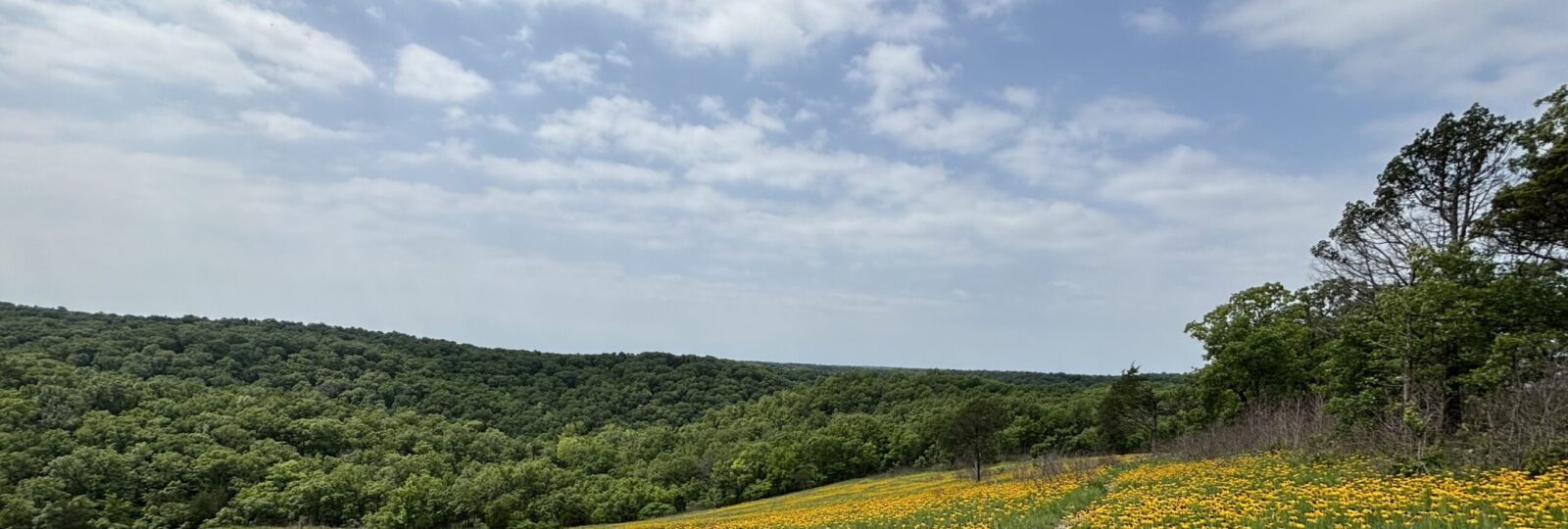Loss of Iowa’s Natural Prairie
Share this story

In 2025, less than 0.1 percent of Iowa’s native tallgrass prairie remains due to rapid expansion and agricultural settlements. Iowa was once the heart of the prairie lands, with 28.6 million acres of natural plants and grasses covering 80 percent of its landscape—today, about 90% of Iowa’s land is crops.
The prairie lands are one of the many biomes of the world native to the midwestern United States. A wide range of flora and fauna come from the prairie, including Midwestern staples such as cornflowers, milkweed and bison. The prairie is a crucial biome for wildlife and migratory insects while also managing carbon emissions into the atmosphere.
According to Story County Conservation, “prairie plants are extremely deep-rooted – some species with roots more than 12 feet deep – and are excellent at holding soil in place, filtering water, and preventing erosion. The roots created the vibrant and fertile soil for which Iowa is so well-known. Many bird, insect, mammal, and reptile species depend on this habitat.”
Iowa’s soil is rich in fertility, making it ideal for farming – all thanks to the prairies of Iowa. Without conservation efforts, the soil could decrease in value and cause issues for farming and agricultural efforts.
Many Iowans take the natural landscape of the state for granted since the majority of Iowa has become farmland. The natural beauty that many don’t get to experience is due to the overuse of farming and the expansion of industry. Only certain preserves remain, like the Neal Smith Wildlife Refuge in Jasper County, Iowa.
Piper Nicholson, a junior at Waukee Northwest High School and a member of the Environmental Club, said, “A bigger issue is construction and land being sold off simply to build a variety of buildings, but otherwise, there are ways we can prevent losing our prairies. It is definitely frustrating, our land would be in a better state than it is if everyone would be more cautious and less ignorant towards the land.”
Since 1850, Iowa has lost 2% of its prairie annually due to the settlement of farmers and the development of agriculture. Yet many environmentalists are dedicated to restoring what was once all of Iowa by planting plants and expanding biodiversity, even in small amounts, like gardens.
“Any little bit helps. Anyone who lives in the Midwest and can plant native, perennial plants, especially flowering ones, is helping bring back the biodiversity that covered the Midwest before the landscape was committed to agriculture. I’d like to see everyone (homeowners, city, and state officials) encourage the use of these plants wherever prairie can be reconstructed. If this happens, then all the other wildlife that has co-evolved with these plants have a chance to survive and maybe even thrive. The hundreds of native bees that have evolved with these plants will have the floral resources they need. Hopefully, we can come to love these plants such that they are seen as an essential part of Iowa,” said Matt O’Neal, a professor of entomology at Iowa State University.
Anyone can help bring back Iowa’s prairie through sustainability and small acts of preservation. Even the smallest acts can make a small difference. Planting natural seeds, volunteering at reserves and enjoying Iowa’s prairie can change the future of Iowa’s landscape and wildlife.
